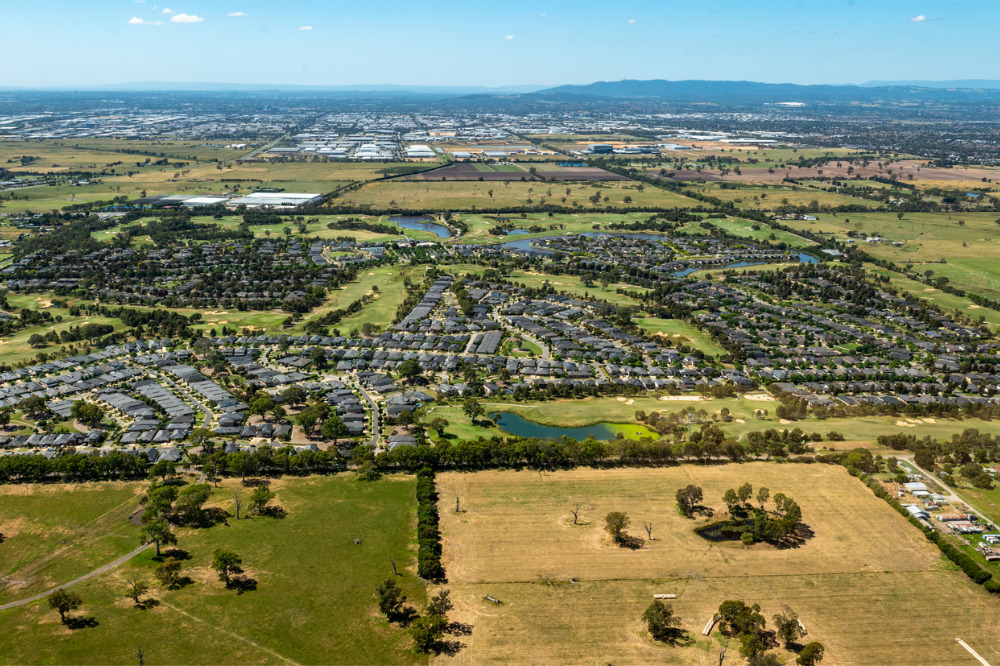Several regional markets that had experienced the strongest value growth through the COVID-induced boom have led sharp falls in Australia’s housing market, according to CoreLogic.
CoreLogic’s Regional Market Update has revealed that house values in six of the most popular lifestyle markets dropped, including Richmond-Tweed (-11.7%), Southern Highlands and Shoalhaven (-7.1%), Sunshine Coast (-7.1%), Gold Coast (-6.4%), Illawarra (-6.1%), and Newcastle and Lake Macquarie (-6.0%).
All markets analysed saw a quarterly decline in house values, except Central Queensland (0.1%), SA’s South East (0.0%), and WA’s Bunbury (0.0%). House values in Richmond-Tweed (-7.8%), Illawarra (-1.9%), and Ballarat (-0.5%) also dipped compared to the levels recorded in the same period last year, while values across Newcastle and Lake Macquarie remain unchanged year-on-year (0.0%).
Regional NSW was the worst-performing house market across a range of different metrics, with Southern Highlands and Shoalhaven posting the largest fall in sales volumes (-27.5%) and the highest vendor discounting rate (-4.9%), while the New England and North West region clocked up the longest time on market at 43 days, CoreLogic data showed.
Kaytlin Ezzy, CoreLogic economist, said that over the three months to October, value declines became more geographically broad-based, with 87.8% of the regional house and unit markets analysed experiencing a quarterly decline in values.
“Consecutive interest rate rises, persistently high inflation, and waning consumer sentiment saw the pace of value declines accelerate across regional Australian property markets,” Ezzy said. “It is unsurprising the Richmond-Tweed region recorded the strongest decline in house values. Throughout the COVID period, values skyrocketed, rising more than 50% and taking the median house value to more than $1.1 million. However the impact of this year’s floods, coupled with seven consecutive rate rises, has seen house values fall in the region by nearly -16% since April.”
The standout performer over the quarter was SA’s South East, where values rose 21.7% over the past year, followed by the Riverina (20.5%), and New England and North West (19.8%). Posting the highest growth in sales volumes was Townville (21.6%), while Toowoomba had the shortest days on market (13), and Victoria’s Latrobe Gippsland region and NSW’s Central West recorded the lowest vendor discounting rate (-2.7%).
While all but two of the 16 regions analysed saw an annual rise in unit values, 14 saw a quarterly decline, which was more than double the number of regions that declined in values over the three months to July.
Southern Highlands and Shoalhaven (-7.7%) had the largest quarterly fall in unit values. This was followed by Sunshine Coast (-6.0%), NSW’s Hume region (-5.5%), and Richmond-Tweed (-5.2%). Only two regions posted a decline in unit values over the past year. These were Townsville and Richmond-Tweed, which were down -2.6% and -0.2%, respectively.
Townville also recorded both the longest time on market (42 days) and highest vendor discounting rate (-4.4%), while Southern Highlands and Shoalhaven saw unit sales volumes plunge -35.8% year-on-year.
Queensland’s Cairns and Toowoomba regions recorded the highest annual rise in unit values over the 12 months to October, up 18.9% and 17.4%, respectively, and were also the only two regions to post unit values growth over the quarter.
Regional Queensland was also the best-performing unit market across a range of different metrics, with Mackay-Isaac-Whitsunday posting the highest annual change in sales volumes (39.2%), and Toowoomba having the shortest time on market (19 days). NSW’s Hunter Valley excluding Newcastle recorded the lowest vendor discounting rate at -1.9%.
“While unit values have not been immune to the downturn, units have largely been more resilient than houses through the downswing to date,” Ezzy said. “If this trend of house values falling at a faster pace than unit values persists, we could see some demand shift towards the detached segment as the value premium for houses shrinks.”
Houses and units in around half of the market analysed transacted faster than over the 12 months to October 2021, she said, but properties were now sitting on the market for around two to three days longer than they were over the year to July, reflecting a continued softening in demand.
“Sales activity has continued to soften over the quarter, with only a few regions, predominantly in northern Queensland, recording an increase in annual sales volumes,” Ezzy said. “While down compared to the previous year, it’s important to remember that last year was one of the busiest sales periods on record, and the majority (76%) of regional markets analysed are still recording higher annual sales volumes compared to their previous five-year averages.”
When it comes to supply, the flow of regional listings has been relatively lacklustre this spring, which has kept total listings levels fairly tight, despite an easing in sales activity.
“While the negotiating power across Australian regional markets is slowly transitioning to the buyer, it is likely tight supply is insulating the downturn to some extent,” Ezzy said.
The outlook for Australia’s regional markets remains skewed to the negative, she said, with values tipped to continue to fall as interest rates increase.
“The lack of a typical spring listings surge is positive, in that we are yet to see material signs of a rise in distressed listings,” Ezzy said. “However, as the cumulative rise in the cash rate approaches the serviceability buffer of 3% which most borrowers were assessed under, we could see an increasing number of regional homeowners come up against affordability pressures in terms of mortgage serviceability.”


